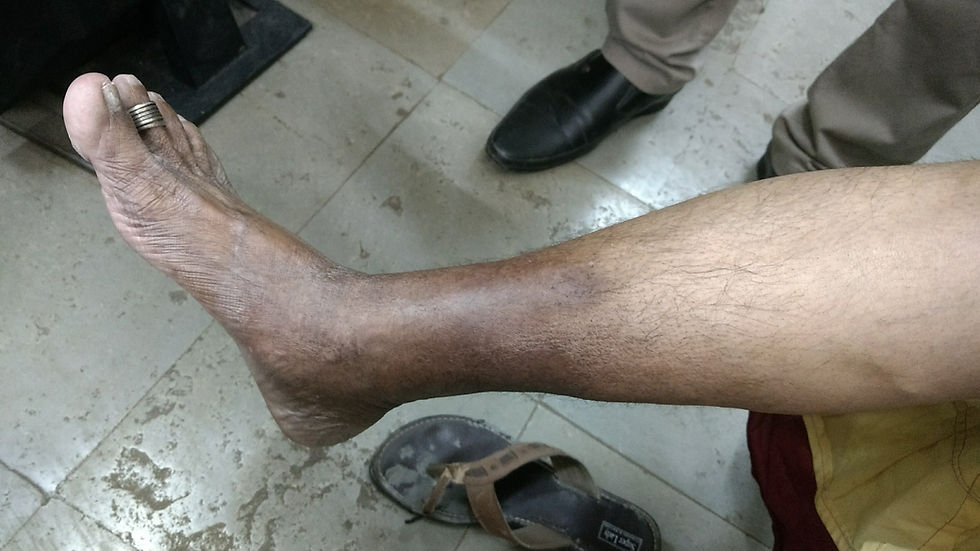Symptoms and Complications of Varicose Veins
- ashish sarode
- Jun 15, 2018
- 2 min read
Updated: Jun 17, 2018
Symptoms in early varicose veins are minimal & varicose veins is a slowly progressing disease. The changes occur so slowly that one gets alarmed only when it is too much to suffer. Early symptoms of this disease should be picked up early so as to avoid complications which can be dangerous. Following are the few common symptoms and complications....
Visible dilated veins over legs & thighs: These are usually painless to start with. As time passes they become more & more dilated & tortuous.

Leg fatigue: On prolonged standing or sitting, with legs in dependant position causes feeling of heaviness or fatigue in legs. It is mostly referred as restlessness by patients, which increases with time . This gets relieved after rest with legs elevated.
Leg cramps: Due to accumulation of metabolic products in muscles one can have mild to moderate cramps in calf muscles especially in night. These get partially relieved by calf exercises.
Swelling ( Edema ) of legs: Due to stagnation of blood in leg veins fluid oozes out of these veins into surrounding tissue spaces. This leads to swelling around ankles(ankle flare), which slowly spreads to lower legs & calf area.
Pigmentation of skin of lower legs: The skin around ankles & lower limbs starts becoming darker in color with changes of dermatitis appearing progressively

Eczema: Inflammation of skin can look like wet or dry Eczema .There can be significant amount of fluid discharge from this skin leading to skin excoriation foul smell & itching. This could lead to infection.
Varicose Ulcers: These are the wounds that develop on legs due to long standing Varicose veins. These wounds do not heal easily & may remain for months to years. Treating the underlying varicose veins is necessary for these ulcers to heal.

Thrombophlebitis: Thrombophlebitis means inflammation of veins. This presents as reddish cord like thickening of superficial varicose veins due to clots within them which can be very painful. There is a risk of this condition to worsen and extend to the deep venous system leading to deep venous thrombosis, which is a potentially dangerous condition with lot of morbidity. The cause is usually slow flow of blood or stagnant blood in the varicose veins.
Bleeding: Bleeding is usually sudden, painless & profuse. It usually takes place from a vein near ankle which ruptures due to high pressure in this varicose vein. Lifting the leg upwards & compression at the bleeding point effectively stops this bleeding. But it can bleed repeatedly leading to significant blood loss.
Deep Vein Thrombosis: Deep Vein thrombosis is a serious complication associated with neglected Varicose Veins. It means formation of blood clots in the deeper system of veins in legs. This occurs due to stagnant blood in the deep veins or extension of the thrombophlebitis.
Comments